Back from the Future
October 24th, 2023 | by Marius Dupuis
(4 min read)
When flying from Europe to China, it’s not only a few hours you are jumping ahead across time zones. Upon arrival it feels more like having traveled in a time machine and having leapfrogged quite a few years.
On a recent trip to China it became apparent that this country plays by different rules. Not only are there now more than 50(!) manufacturers of electric vehicles (EV) fighting for a large domestic market, but also the “C” in “ICV” (Intelligent Connected Vehicles) is brought to its best.
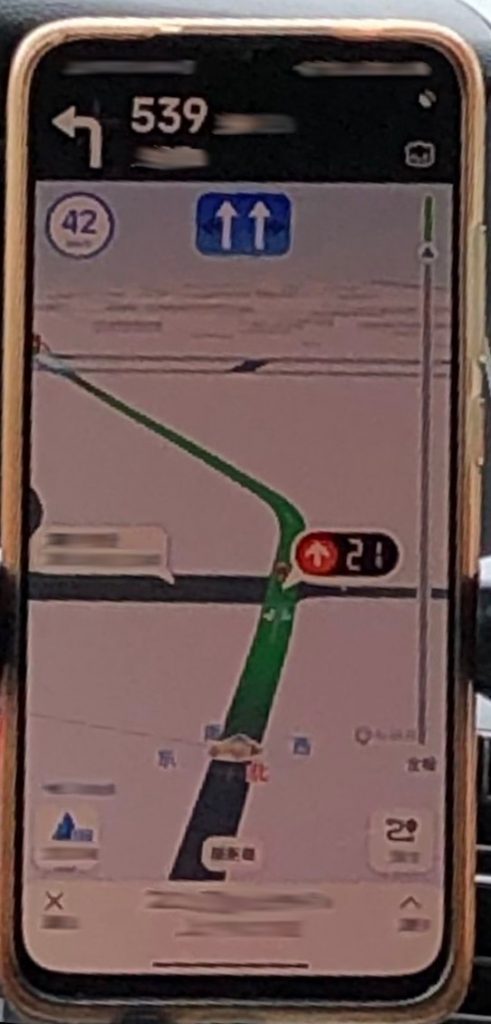
From an engineering perspective (and only from this one!), great things can be done. What struck your correspondent first was the live indication of traffic light phases which was hardly ever more than a second off from reality.
The picture on the left, taken during a ride in Tianjin, shows the navigation app on the smartphone indicating that the upcoming traffic light will remain red for the next 21 seconds. Therefore, you can adapt your speed to make it smoothly to the upcoming green light (if traffic permits). Or you can just relax in the queue since nothing else will happen during that time. The system will also indicate how long a green phase will last and that might sometimes make you want to take the challenge. But be assured, speeding isn’t a good idea, and being a law-abiding citizen will always pay off.
In Europe we all know the vehicle-to-anything (V2X) communication which also supports the transmission of the signal phase and timing (SPaT) message. But until now only testbeds are equipped with V2X communication. Also very few vehicles (e.g., Volkswagen’s Golf and ID. series) are ready to receive such messages. And if you want to have this information in your personal devices then the information must be accessible via the internet. Hamburg is currently providing a live-feed about the traffic light phases per turning lane as a Web Feature Service.
It seem that we’ll have to dig a bit deeper into this subject since we have not yet been able to collect more information about coverage in China or services and experiences in other countries.
Another thing your correspondent got to see, was a live monitoring system for designated vehicles of various manufacturers by a state-controlled agency. Not only did you see how many (and which) vehicles were in service but also how many kilometers they had driven etc. This all-encompassing solution is based on legislation that obligates the OEMs to implement real-time monitoring (RTM) in all electric vehicles (including hybrid vehicles). From the data that are gathered, many conclusions may be drawn (e.g., about safety of the vehicles, the need for charging infrastructure, the usage of vehicles etc.) and mobility may be improved. But, of course, what looks like a dream for an engineer is certainly a nightmare for a European GDPR officer.
Not only are the rules on data handling different in China. Traffic itself provides a few highlights. Just take the example of the “deferred” left- and u-turn lanes in the following two pictures:
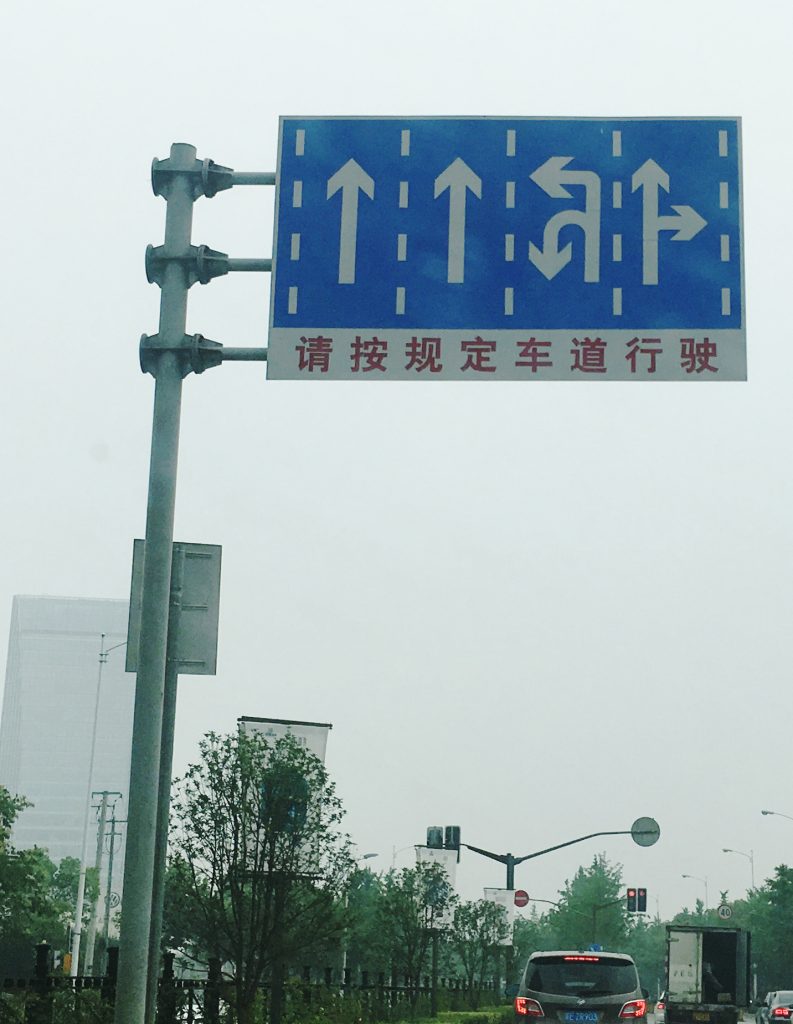

The clear message is: if you want to go left, don’t take the very left lane! And if you want to go straight, use a left lane or a lane right of the left-turn lane. Quite counter-intuitive for us European guys.
However, for the u-turn lane in particular, this makes a lot of sense, especially in road layouts that do not provide a median but only a fence between lanes of opposing direction (as is very common in Chinese cities and keep pedestrians and cyclists off from jaywalking as well as oncoming traffic getting into your lane which all of it is really helpful to make automated driving easier to manage). How else could you make sure that the radius required for a u-turn can be provided?
It might be interesting to see autonomous vehicles that have been trained on European and US road layouts navigate these situations. Sure, they won’t be able to handle them out of the box and may need additional input. But that’s what AI is about: training data.
It might also be interesting to see an AD system’s behavior if traffic lights are defect. In Germany, for example, there are always signs regulating the right of way in case of a power cut. How the implicit rules for the above situations may be is still unknown. This will certainly be something we’ll have to investigate further. In the meantime the sometimes quite “inventive” way of persons driving in China might help compensate for infrastructure deficiencies.
Infrastructure can also pose other challenges: what about a very “rigid” height and weight limit:
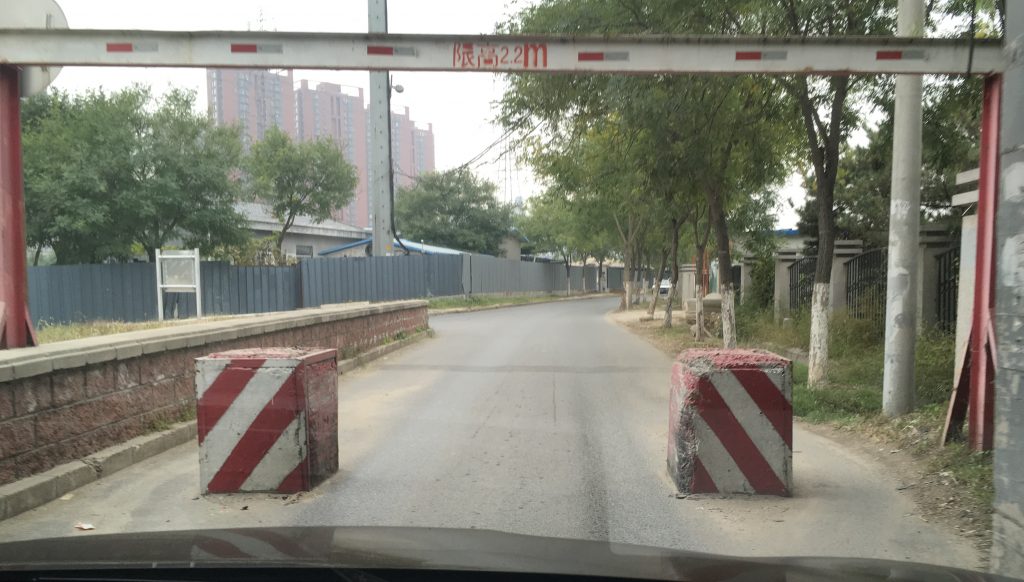
Let’s just hope that your navigation system saw this coming.
Not only is the infrastructure in China different but also the participants are sometimes quite “futuristic”:
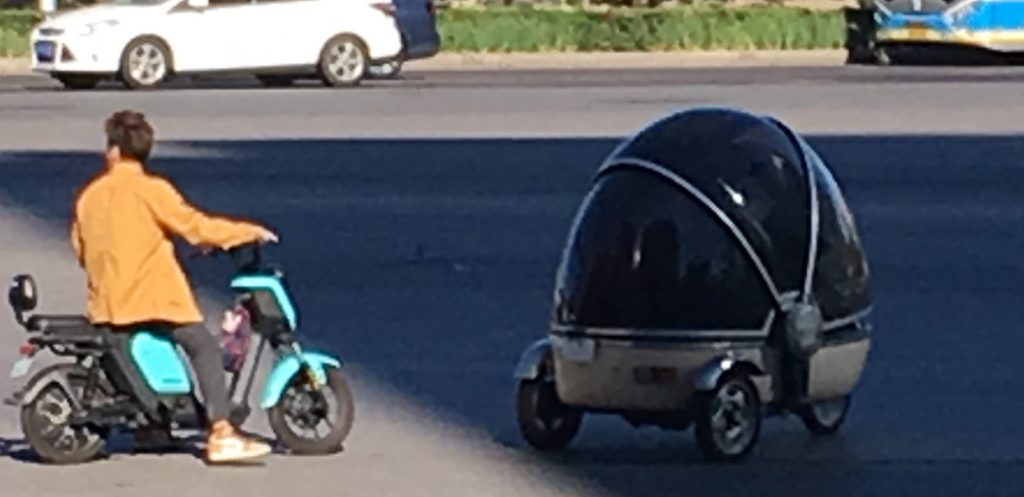
As long as AD systems haven’t been trained to recognize easter eggs they should still be able to identify the “strange” object in the image above as a three-wheeler – shouldn’t they? As a human being, and especially as a pedestrian, you realize without further training that you better not be hit by this object. But this is a good strategy anyway to survice in China’s traffic. The tendendy of motorbikes, scooters, vehicles and everything else to give pedestrians the right of way even when they cross at a green pedestrian light, is almost negligible. But, to be honest, there are many places in Europe where you find similar (or worse) behavior.
With all the future taking place in China currently, it is good to know that the people there still haven’t forgotten where they came from. For the old folks among us who – even in their not-so-early days – managed their navigation tasks by holding a paper map in one hand while trying to control the steering with the other one, here’s the ultimate retro-version of navigation aids: a paper-cut map of Tianjin, China:
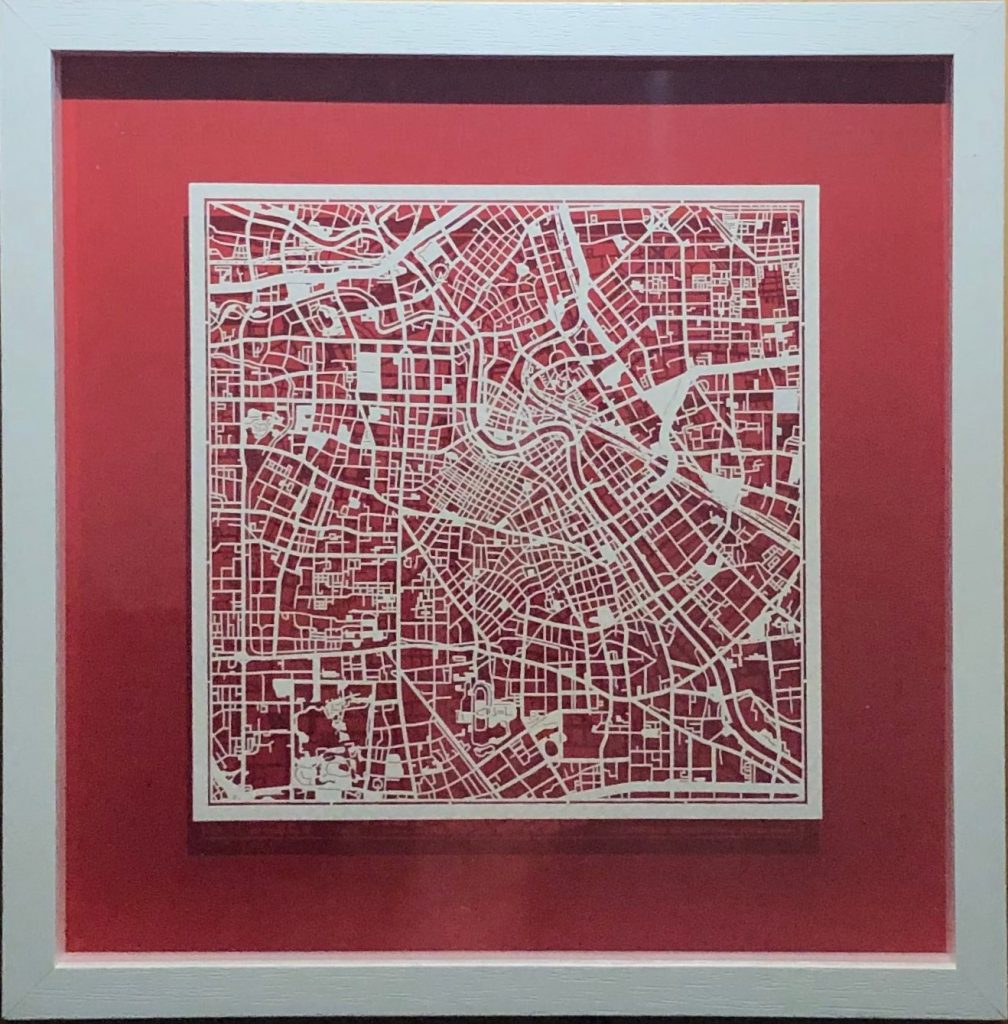
In complete darkness, you may even “feel” your way home.
Stay tuned for more news on the fascinating mobility landscape in China.